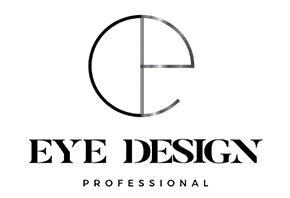How To Dispose Of Sharps Safely?

How should I dispose of my sharps?
This is a frequently asked question but not everyone knows how to handle it properly. But don't worry; we have outlined some best practices for how to dispose of sharps safely, so you can protect yourself and others.
What are sharps?
The term "sharps" refers to medical devices that have sharp edges or points, such as needles, syringes, lancets, and other devices that can pierce the skin. The word "sharps" is used in the medical industry to describe these devices that are commonly used for medical procedures like injections, blood draws, and other related procedures.
The term "sharps" comes from the fact that these devices are sharp and can easily puncture the skin. Proper handling and disposal of sharps are crucial in preventing injury and the spread of infectious diseases, especially since sharps may come into contact with blood or other bodily fluids that may be contaminated with viruses or other pathogens.
Sharps waste is used by the following types of businesses:
- Medical facilities, hospitals, and clinics
- Beauticians and beauty salons Dentists
- Tattoo parlors Nursing homes
- Nursery schools and schools
It is your responsibility as a business to protect your employees from infection and sharps injuries. To do so, you must ensure that appropriate control measures for the safe disposal of sharps waste are in place.
It is important to handle sharps with caution and to dispose of them properly in order to prevent accidental needlestick injuries and reduce the risk of exposure to infections. Proper disposal methods for sharps typically involve the use of puncture-resistant containers that are labeled specifically for sharps and that are collected and processed by specialized medical waste management companies.
How to dispose of sharps safely?
Proper disposal of sharps is important in order to prevent injury and the spread of infectious diseases. Each state or territory in Australia may have slightly different laws and regulations regarding the disposal of sharps, but the following are generally considered best practices for managing needle and syringe (N&S) waste:
- Use a puncture-resistant container to dispose of your sharps immediately after use. Sharps containers are available at pharmacies, medical supply stores, or your healthcare provider.
- Sharps and sharps containers should be kept out of reach from children and animals.
- Do not overfill the sharps container. Leave enough space at the top to safely dispose of the container.
- Do not throw sharps in the regular trash, recycling bin, or flush them down the toilet.
- Check with your local health department or waste management facility to find out where to properly dispose of sharps in your community.
- If your community does not have a sharps disposal program, contact your healthcare provider or pharmacy to ask for guidance on how to dispose of sharps safely.
- When traveling with sharps, use a travel-sized sharps container and dispose of it properly when you return home.
- If you accidentally get stuck with a used needle or sharp, immediately wash the affected area with soap and water, and seek medical attention.
Remember, sharps should always be disposed of safely in a proper sharps container, and not in the regular trash. Improper disposal of sharps can pose a serious risk of injury or infection to yourself, others, and the environment. It's important to note that some states or territories in Australia may have specific requirements for the disposal of N&S waste, such as labelling requirements or disposal at specific facilities. It's recommended to check with your local health department or waste management facility for more information on the requirements in your area.
The best way to do is using Sharps containers, which should be puncture resistant, leak-proof, and designed to hold sharps inside for storage, transport, and disposal. These containers must adhere to state or federal regulations, such as color coding, proper labeling, hazardous substance markings, and proper sealing. When sharps containers are 3/4 full, they should be disposed of properly using sharps container disposal.
What are the dangers of not properly disposing of sharps waste?
Failing to dispose of sharps waste correctly can pose a significant risk to individuals and the environment:
- Sharps, such as needles, syringes, and lancets, are medical devices that have sharp edges or points and are commonly used for procedures like injections and blood draws. When sharps are not disposed of properly, they can cause injuries or infections to individuals who come into contact with them.
- Sharps waste can also contaminate the environment, polluting the air and water, and posing a risk to wildlife and the ecosystem.
- Improper disposal of sharps waste can lead to serious consequences, including the spread of infectious diseases and environmental damage.

